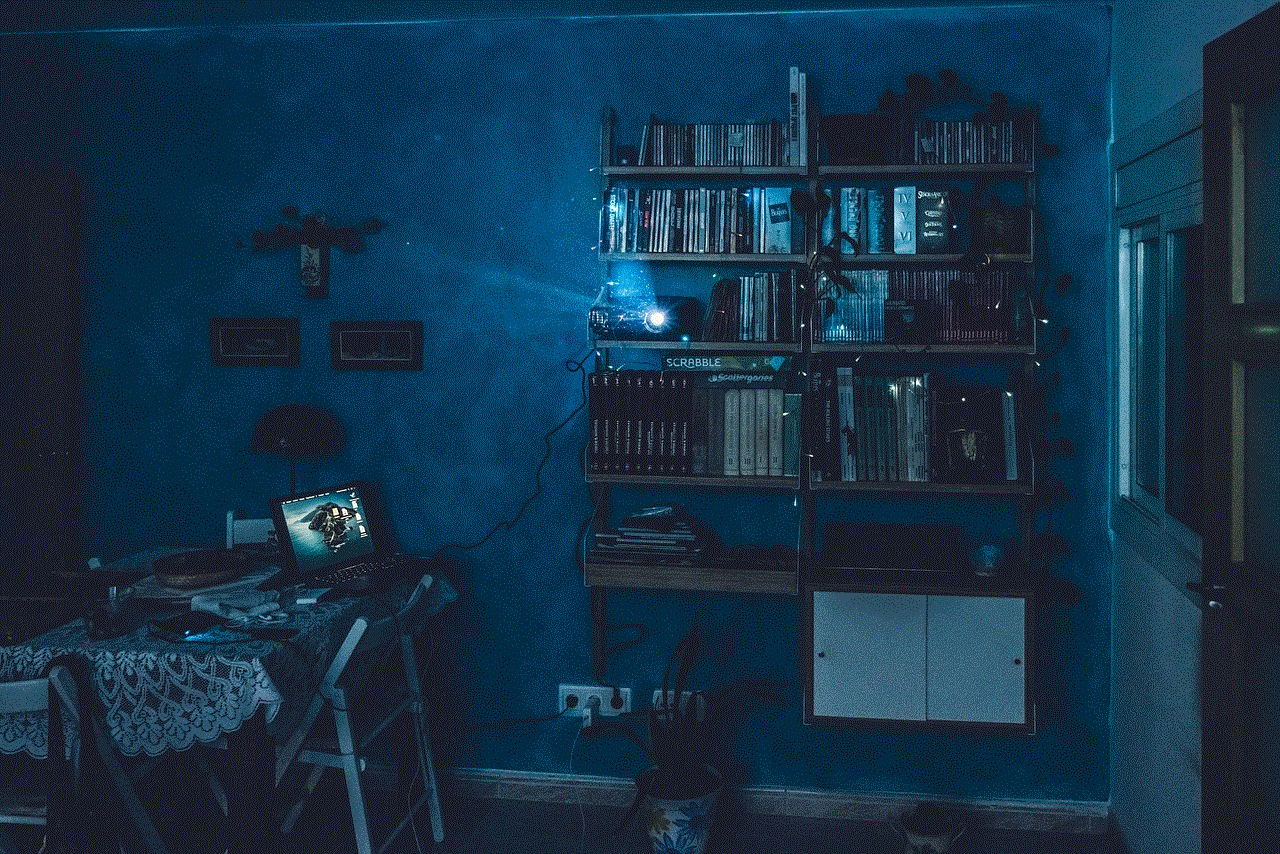como monitorear un celular desde otro
En la era digital actual, es cada vez más común buscar formas de monitorear un celular desde otro dispositivo. Ya sea por motivos de seguridad, para mantener un ojo en los hijos o para proteger la integridad de la información personal, el monitoreo de un celular puede ser una herramienta útil. Sin embargo, es importante tener en cuenta que el monitoreo de un celular sin el consentimiento del propietario puede violar la privacidad y las leyes locales, por lo que es esencial actuar de manera ética y legal.
En este artículo, exploraremos diferentes métodos y herramientas para monitorear un celular desde otro dispositivo. También discutiremos las implicaciones éticas y legales del monitoreo de celulares y proporcionaremos consejos sobre cómo llevar a cabo esta tarea de manera responsable.
1. Aplicaciones de monitoreo parental: Una de las formas más comunes y aceptadas de monitoreo de celulares es a través de aplicaciones de control parental. Estas aplicaciones permiten a los padres supervisar las actividades de sus hijos en sus dispositivos móviles, incluyendo la navegación por internet, el uso de aplicaciones y la ubicación en tiempo real. Algunas de las aplicaciones populares incluyen mSpy, FlexiSPY y KidsGuard Pro.
2. Software de monitoreo remoto: Otra opción para monitorear un celular desde otro dispositivo es a través del uso de software de monitoreo remoto. Estos programas permiten acceder de forma remota al celular objetivo y realizar un seguimiento de sus actividades. Algunos ejemplos de software de monitoreo remoto son mSpy, FlexiSPY y Highster Mobile.
3. Aplicaciones de rastreo de ubicación: Si tu objetivo principal es rastrear la ubicación de un celular, existen muchas aplicaciones disponibles que te permiten hacerlo. Estas aplicaciones utilizan el GPS del celular para proporcionar información en tiempo real sobre la ubicación del dispositivo. Algunas de las aplicaciones populares de rastreo de ubicación incluyen Find My iPhone para dispositivos iOS y Find My Device para dispositivos Android.
4. Monitoreo a través de aplicaciones de mensajería: Muchas aplicaciones de mensajería, como WhatsApp y Telegram, permiten a los usuarios compartir su ubicación en tiempo real con otros contactos. Si tienes acceso al celular objetivo, puedes utilizar estas aplicaciones para rastrear su ubicación y seguir sus movimientos.
5. Servicios de monitoreo de terceros: Además de las aplicaciones y el software mencionados anteriormente, también existen servicios de monitoreo de terceros que ofrecen funciones avanzadas de seguimiento y control de celulares. Estos servicios suelen requerir la instalación de una aplicación en el celular objetivo y proporcionan acceso remoto a través de un panel de control en línea. Algunos ejemplos de servicios de monitoreo de terceros son Spyzie, Cocospy y Mobile Spy.
6. Monitoreo a través de la cuenta de Google o iCloud: Si el celular objetivo está vinculado a una cuenta de Google (en el caso de dispositivos Android) o a una cuenta de iCloud (en el caso de dispositivos iOS), puedes utilizar estas cuentas para acceder a información como la ubicación del dispositivo, los contactos, los mensajes y más. Sin embargo, debes tener en cuenta que necesitarás saber las credenciales de inicio de sesión de la cuenta para poder acceder a esta información.
7. Monitoreo a través de aplicaciones de escritorio: Además de las opciones móviles, también existen aplicaciones de escritorio que te permiten monitorear un celular desde otro dispositivo. Estas aplicaciones suelen requerir la instalación de un programa en el celular objetivo y proporcionan acceso remoto a través de una interfaz de escritorio. Algunos ejemplos de aplicaciones de escritorio para monitorear celulares son AirDroid, ApowerMirror y Mobizen.
8. Riesgos y consideraciones éticas: Antes de decidir monitorear un celular desde otro dispositivo, es importante considerar los riesgos y las implicaciones éticas de esta acción. El monitoreo sin el consentimiento del propietario puede violar la privacidad y las leyes locales, lo que puede tener consecuencias legales. Además, es esencial respetar la privacidad de los demás y utilizar estas herramientas de manera responsable.
9. Obtener el consentimiento: Si estás considerando monitorear un celular, especialmente el de otra persona, es fundamental obtener su consentimiento. Esto es especialmente importante cuando se trata de monitorear los dispositivos de los niños, ya que es necesario establecer límites y explicar las razones por las que se está realizando el monitoreo.
10. Alternativas al monitoreo: Si no te sientes cómodo monitoreando un celular desde otro dispositivo, existen otras formas de proteger la seguridad y la privacidad en línea. Algunas alternativas incluyen establecer conversaciones abiertas sobre la seguridad en línea, educar a los niños sobre los riesgos y enseñarles a tomar decisiones informadas, y utilizar herramientas de seguridad en línea, como bloqueadores de contenido y controles parentales.
En conclusión, existen varias formas de monitorear un celular desde otro dispositivo, ya sea a través de aplicaciones de control parental, software de monitoreo remoto o servicios de terceros. Sin embargo, es importante tener en cuenta los riesgos y las implicaciones éticas de esta acción, y siempre obtener el consentimiento del propietario antes de realizar cualquier tipo de monitoreo. Al utilizar estas herramientas de manera responsable, puedes proteger la seguridad y la privacidad en línea de tus seres queridos y mantenerte informado sobre sus actividades en sus dispositivos móviles.
best phone android 2016
Smartphones have become an essential part of our lives, and with the constant advancements in technology, the market is flooded with a plethora of options to choose from. This makes it a daunting task to find the best phone among the latest releases. However, in 2016, there were some standout devices that took the smartphone world by storm. In this article, we will be discussing the best Android phones of 2016 that redefined the smartphone experience.
1. Samsung Galaxy S7/S7 Edge
When it comes to Android phones, Samsung is a brand that needs no introduction. In 2016, they launched their flagship devices, the Samsung Galaxy S7 and S7 Edge, that set a new benchmark for the smartphone industry. With a stunning design, powerful hardware, and a host of innovative features, these phones were the talk of the town.
The Galaxy S7 and S7 Edge featured a 5.1-inch and 5.5-inch Super AMOLED display respectively, with a resolution of 1440 x 2560 pixels. The phones were powered by Qualcomm’s Snapdragon 820 processor or Samsung’s own Exynos 8890 chipset, depending on the region. They also came with 4GB of RAM and 32GB or 64GB of internal storage, which could be expanded up to 256GB via a microSD card.
One of the most notable features of these phones was their camera. The Galaxy S7 and S7 Edge featured a 12-megapixel primary camera with an f/1.7 aperture, which produced stunning images even in low light conditions. They also had a 5-megapixel front camera, perfect for selfies and video calls.
The phones also had a IP68 rating, making them dust and water-resistant. The S7 had a 3000mAh battery, while the S7 Edge had a larger 3600mAh battery, ensuring long hours of usage. Overall, the Samsung Galaxy S7 and S7 Edge were undoubtedly the best Android phones of 2016.
2. Google Pixel/XL
In 2016, Google decided to take a step further in the smartphone market by launching their own devices, the Google Pixel and Pixel XL. These phones were the first to come with Google’s virtual assistant, Google Assistant, and also had a dedicated button for it. They were also the first devices to come with Android 7.1 Nougat out of the box.



The Pixel and Pixel XL had a 5-inch and 5.5-inch AMOLED display respectively, with a resolution of 1080 x 1920 pixels. They were powered by Qualcomm’s Snapdragon 821 processor and had 4GB of RAM and 32GB or 128GB of internal storage. The phones also had a 12.3-megapixel primary camera with an f/2.0 aperture, which was praised for its excellent low-light performance. They also had an 8-megapixel front camera.
One of the standout features of the Pixel and Pixel XL was their battery life. The Pixel had a 2770mAh battery, while the XL had a 3450mAh battery, both of which lasted all day with heavy usage. The phones also had a fingerprint scanner on the back and a USB Type-C port for charging and data transfer.
3. OnePlus 3T
OnePlus has made a name for itself in the smartphone market by offering flagship-level devices at an affordable price. In 2016, they launched the OnePlus 3T, which was an upgraded version of their popular OnePlus 3. The 3T retained the design of the OnePlus 3 but came with improved hardware and features.
The OnePlus 3T had a 5.5-inch Optic AMOLED display with a resolution of 1080 x 1920 pixels. It was powered by Qualcomm’s Snapdragon 821 processor and had 6GB of RAM and 64GB or 128GB of internal storage. The phone also had a 16-megapixel primary camera with an f/2.0 aperture, which produced stunning images. It also had a 16-megapixel front camera, perfect for selfies.
One of the most impressive features of the OnePlus 3T was its Dash Charge technology, which allowed the phone to charge up to 60% in just 30 minutes. The phone also had a 3400mAh battery, ensuring long hours of usage. It also had a fingerprint scanner on the front and a USB Type-C port for charging and data transfer.
4. LG V20
The LG V20 was another top contender for the best Android phone of 2016. It was a unique device that stood out from the competition with its secondary display and dual-camera setup. The secondary display was located on the top of the phone, providing quick access to notifications, apps, and other settings.
The V20 had a 5.7-inch IPS LCD display with a resolution of 1440 x 2560 pixels. It was powered by Qualcomm’s Snapdragon 820 processor and had 4GB of RAM and 32GB or 64GB of internal storage, which could be expanded up to 256GB via a microSD card. The phone also had a 16-megapixel primary camera with an f/1.8 aperture and a 8-megapixel secondary camera with an f/2.4 aperture for wide-angle shots.
The phone also had a removable 3200mAh battery, which was a rare feature in 2016. It also had a fingerprint scanner on the back and a USB Type-C port for charging and data transfer. The LG V20 was a solid choice for those looking for a unique smartphone experience.
5. Huawei P9
Huawei has established itself as a major player in the smartphone market, and in 2016, they launched the Huawei P9, which was a game-changer in terms of camera technology. The phone featured a dual-camera setup, co-engineered with Leica, which produced stunning images with its 12-megapixel primary camera and 8-megapixel secondary camera.



The P9 had a 5.2-inch IPS LCD display with a resolution of 1080 x 1920 pixels. It was powered by Huawei’s own Kirin 955 processor and had 3GB or 4GB of RAM and 32GB or 64GB of internal storage, which could be expanded up to 256GB via a microSD card. The phone also had an 8-megapixel front camera for selfies and video calls.
The phone also had a fingerprint scanner on the back and a USB Type-C port for charging and data transfer. The P9 also had a 3000mAh battery, which lasted all day with moderate usage. Overall, the Huawei P9 was a solid choice for those looking for a smartphone with a great camera.
6. HTC 10
HTC may have fallen behind in the smartphone market in recent years, but in 2016, they launched the HTC 10, which was a solid device with impressive features. The phone had a sleek and premium design, with a metal unibody construction.
The HTC 10 had a 5.2-inch Super LCD5 display with a resolution of 1440 x 2560 pixels. It was powered by Qualcomm’s Snapdragon 820 processor and had 4GB of RAM and 32GB or 64GB of internal storage, which could be expanded up to 256GB via a microSD card. The phone also had a 12-megapixel primary camera with an f/1.8 aperture and a 5-megapixel front camera.
One of the standout features of the HTC 10 was its BoomSound Hi-Fi edition speakers, which provided an immersive audio experience. The phone also had a 3000mAh battery, which lasted all day with moderate usage. It also had a fingerprint scanner on the front and a USB Type-C port for charging and data transfer.
7. Moto Z
Motorola (now owned by Lenovo) has been known for its budget-friendly smartphones, but in 2016, they launched the Moto Z, which was a flagship device with a unique modular design. The phone had a thin and lightweight design, and its back panel could be swapped with different modules, such as a battery pack, a camera add-on, or a speaker.
The Moto Z had a 5.5-inch AMOLED display with a resolution of 1440 x 2560 pixels. It was powered by Qualcomm’s Snapdragon 820 processor and had 4GB of RAM and 32GB or 64GB of internal storage, which could be expanded up to 256GB via a microSD card. The phone also had a 13-megapixel primary camera with an f/1.8 aperture and a 5-megapixel front camera.
The phone also had a fingerprint scanner on the front and a USB Type-C port for charging and data transfer. It also had a 2600mAh battery, which was a bit underwhelming compared to other flagship devices of 2016. However, the modular design of the Moto Z made it stand out from the crowd.
8. Xiaomi Mi 5



Xiaomi is another brand that has made a name for itself in the budget smartphone market, but in 2016, they launched the Xiaomi Mi 5, which was their first attempt at a flagship device. The phone had a sleek and stylish design, with a ceramic back panel that gave it a premium look and feel.
The Mi 5 had a 5.15-inch IPS LCD display with a resolution of 1080 x 1920 pixels. It was powered by Qualcomm’s Snapdragon 820 processor and had 3GB or 4GB of RAM and 32GB, 64GB, or 128GB of internal storage, depending on the variant. The phone also had a 16-megapixel primary camera with an f/2.0 aperture and a 4-megapixel front camera